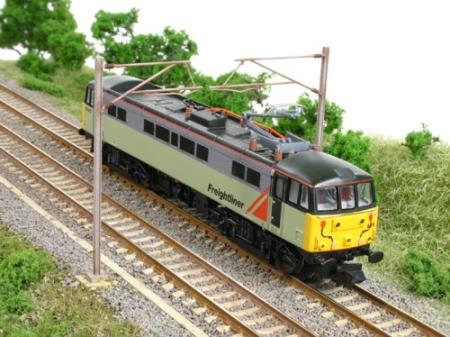Choose Your Model Train Scale
The scale refers to the size of the model train compared to the real size. A 1:22.5 scale locomotive is 22.5 times smaller than the real locomotive. In other words, the smaller the number, the larger the train.
For example, if you have limited space, you might want to choose a smaller scale and a track with some curves instead of a straight track. You may want to make a temporary setup and determine what fits best.
The different model train scales, listed from smallest to largest, are:
Scale Z (1:220): Z-scale trains are a great option for those with limited space. These trains are not just a little detailed, they are highly detailed.
Scale N (1:160): N-scale is very popular and is the second smallest after Z. N-scale trains are perfect for enthusiasts who want long trains or to pay attention to the landscape. The price of N-scale equipment is slightly higher than HO scale. Micro-Trains, or MTL, is also a well-known brand that makes N-scale trains.
Scale HO (1:87): HO scale trains, one of the most popular scales for collectors, come in countless types of trains and have a wide selection of landscapes available. HO trains are usually highly detailed and reasonably priced. An HO layout requires a moderate amount of space.
Scale S (1:64): S-scale trains, the scale used by American Flyer trains, have a good following among collectors of narrow-gauge miniatures. This larger scale makes the train dominate any setup. S-scale doesn't have as massive a following as HO or N scales.
Scale O (1:48): O-scale trains are very popular toy trains. Lionel continues to make trains in this scale. They are easy to handle for children. MTH also makes miniature tinplate trains and standard-sized models.
Scale G (1:22.5): G-scale trains are especially suitable for garden railroads. LGB makes the popular scale in the U.S., creating detailed and durable trains that can withstand all elements. Other manufacturers of this scale include Bachmann and AristoCraft.
Scale T (1:450): This is one of the smallest scales available. T-scale trains are extremely tiny and often used in very specific projects, such as by collectors with very limited space.
Scale TT (1:120): This scale is slightly larger than N and was very popular in Europe, especially in former East Germany. It is less common today but still has a dedicated following.
Scale 1 Gauge (1:32): This is a large scale, popular for garden trains and wide-gauge trains. It is similar to G-scale but with larger trains, generally more detailed and robust.
Scale O-27 (1:48, but with smaller track): This is a variant of O-scale, primarily used by Lionel for their toy trains. The "27" refers to the size of the track, which is smaller than standard O-scale track, allowing for more compact setups.
Scale F (1:20.3): Very similar to G-scale but slightly larger. This scale is especially used in garden trains with wide gauge, similar to trains from the U.S. Rocky Mountain Railroad era.
- HO (1:87)
- S (1:64)
- O (1:48)
- G (1:22.5)
- T (1:450)
- TT (1:120)
- 1 Gauge (1:32)
- O-27 (1:48, vías más pequeñas)
- F (1:20.3)








